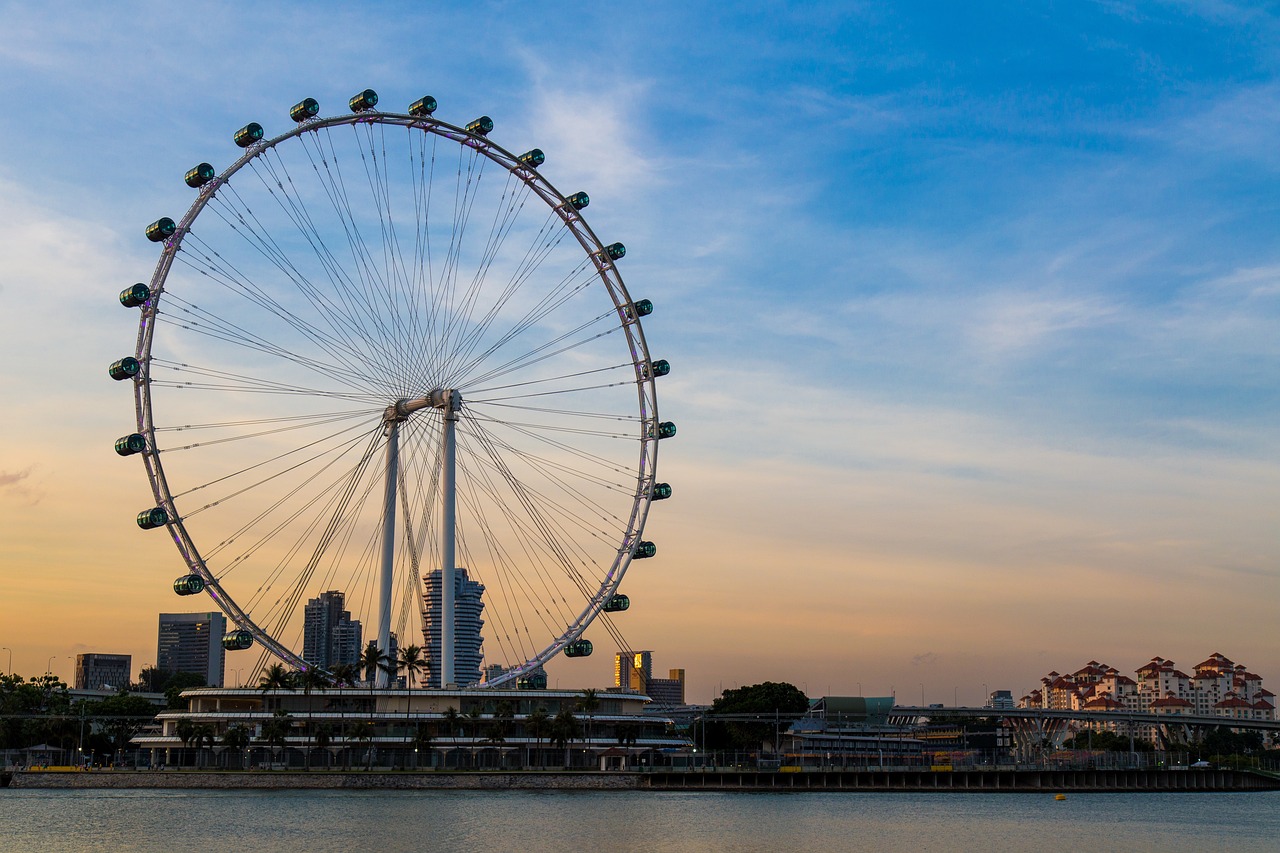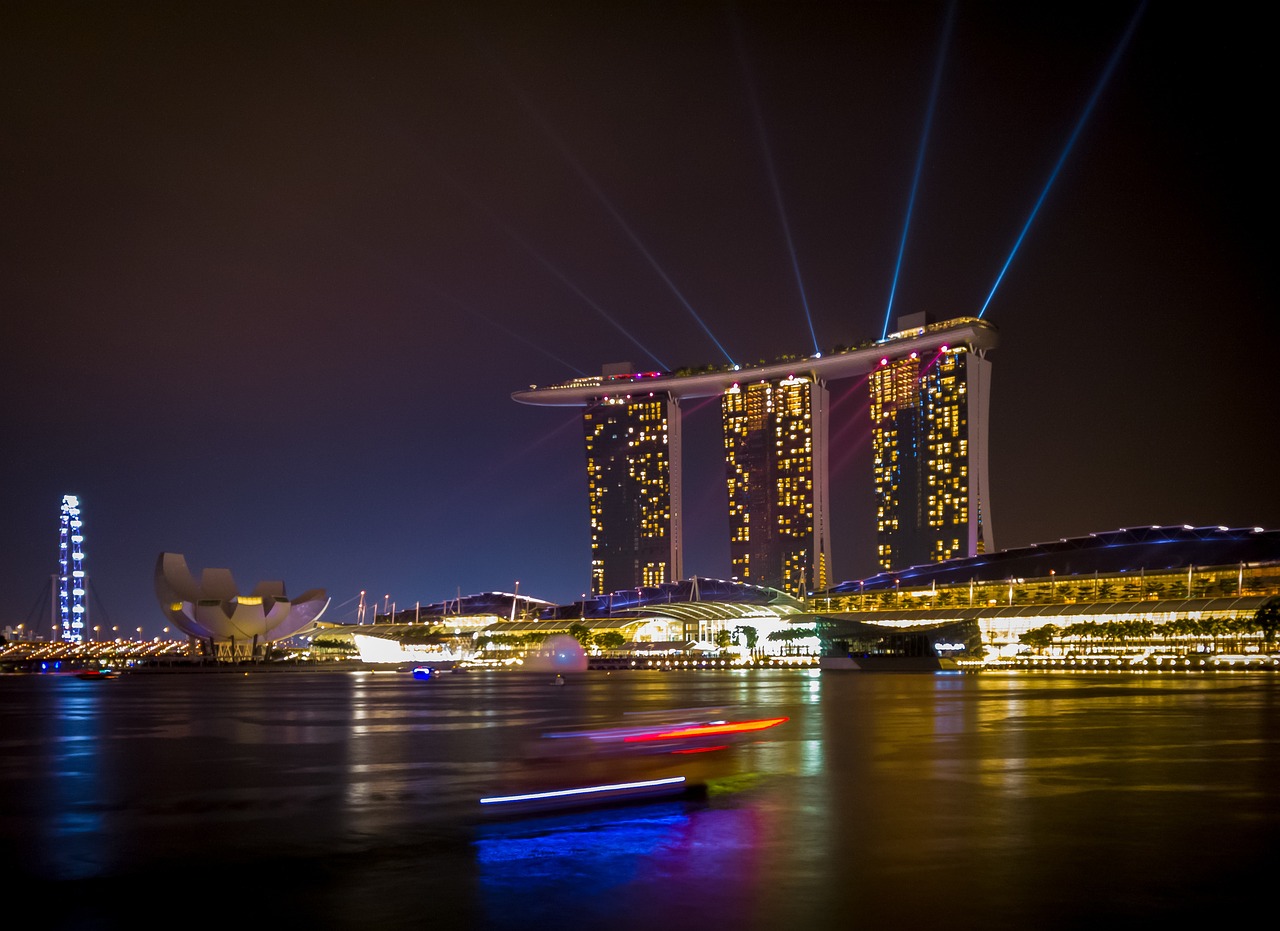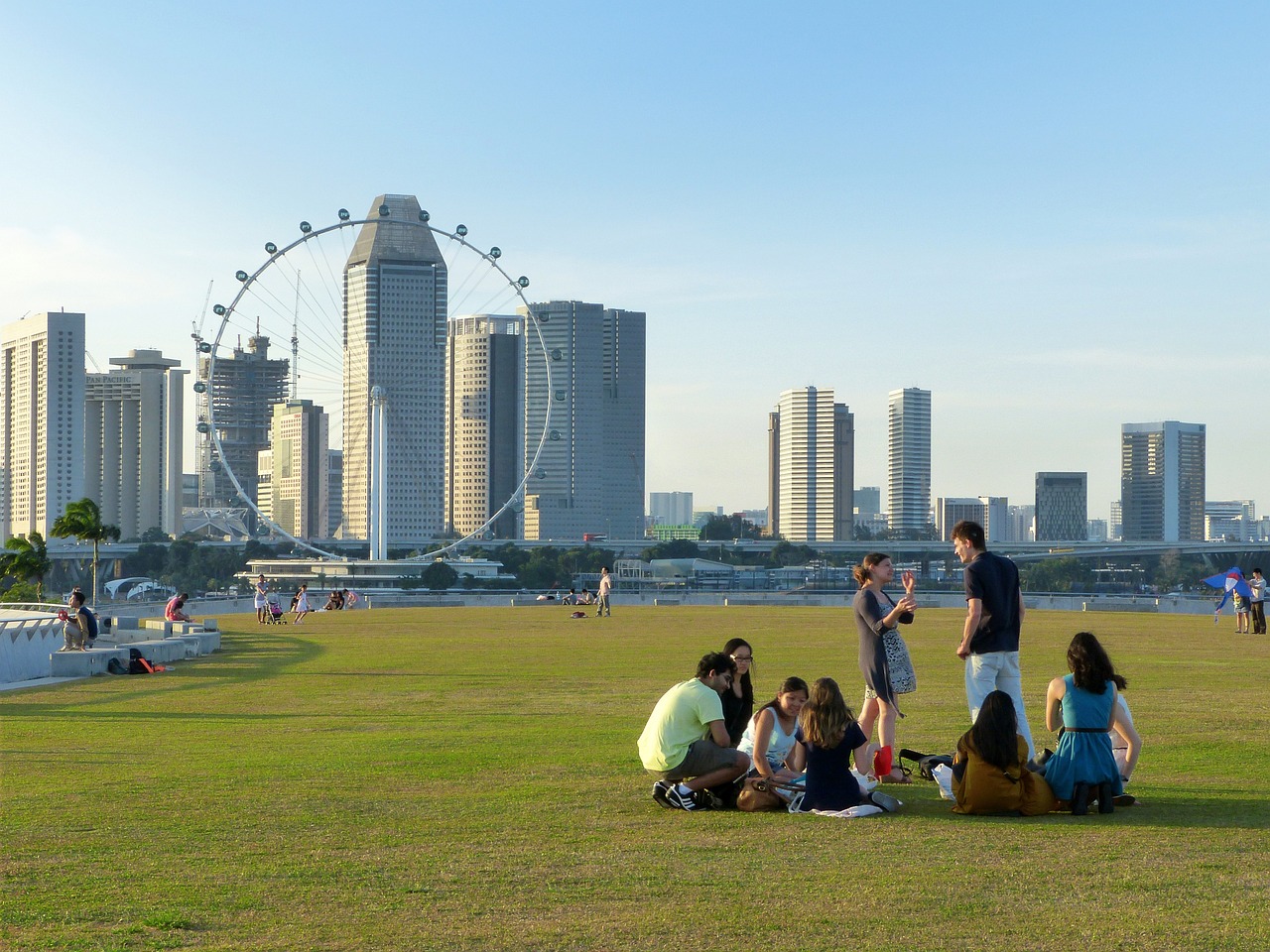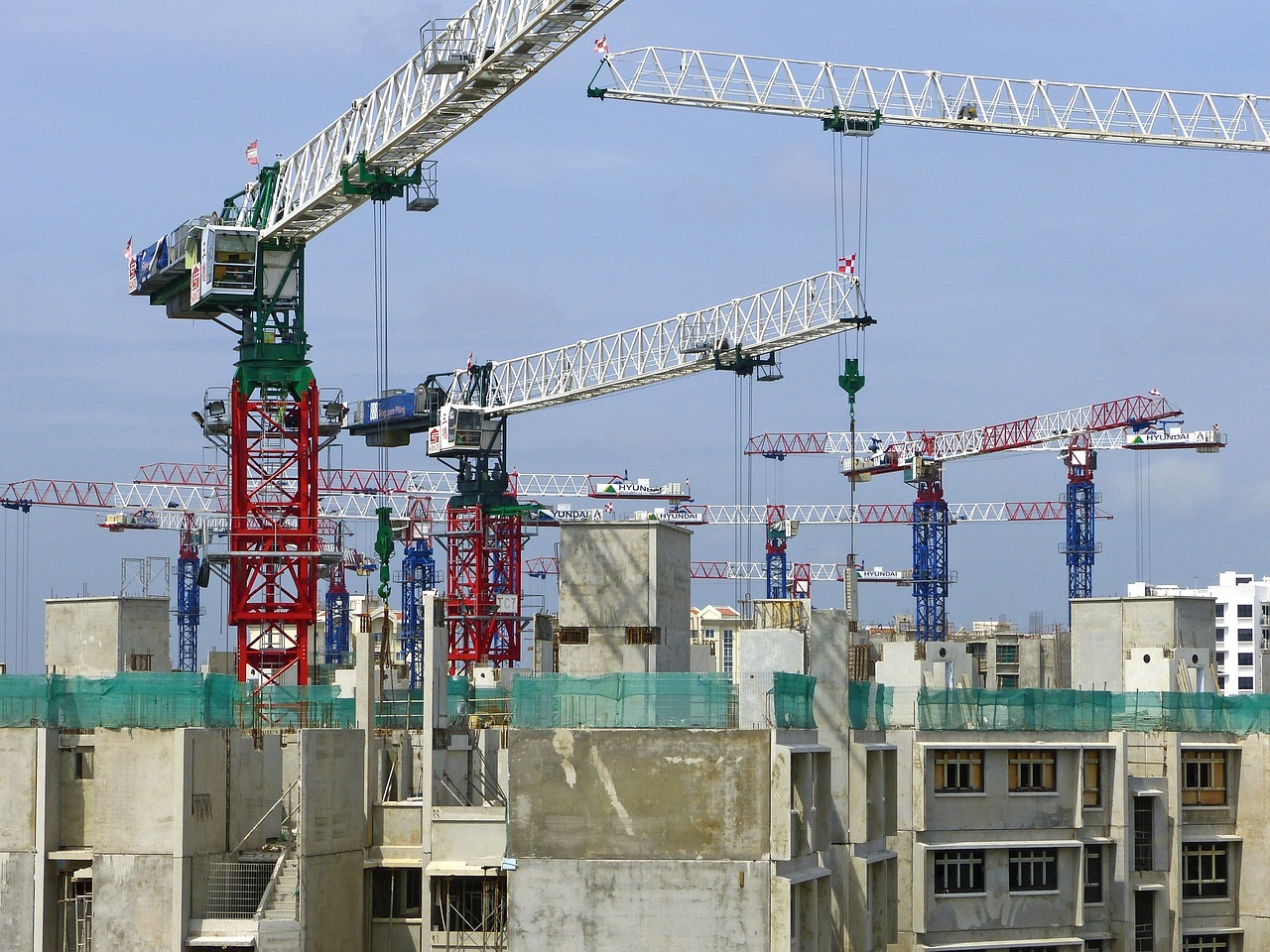Singapore Video
Getting Around: Transportation Tips for Singapore
Singapore is a bustling city-state that offers a variety of transportation options for residents and visitors alike. From efficient public transportation to convenient taxi services, navigating Singapore is a breeze. In this article, we will explore the different modes of transportation available in Singapore and provide useful tips to help you get around the city with ease.
1. Mass Rapid Transit (MRT)
The Mass Rapid Transit (MRT) is Singapore’s efficient and extensive subway system. It is one of the best ways to get around the city quickly and comfortably. The MRT network covers most parts of Singapore, including major tourist attractions, shopping districts, and residential areas. With air-conditioned trains and frequent service, the MRT is a popular choice for both locals and tourists.
- Tap-in and Tap-out: When using the MRT, remember to tap your EZ-Link card or Singapore Tourist Pass on the card reader at the entrance and exit gates. This ensures that you are charged the correct fare for your journey.
- Operating Hours: The MRT operates from around 5:30 am to midnight, with extended hours on weekends and public holidays. Be sure to check the operating hours if you plan to travel late at night.
- Interchange Stations: Some MRT stations are interchange stations, which allow you to transfer between different lines without exiting the station. Look out for signs indicating the interchange stations.
- Priority Seats: The MRT has designated priority seats for elderly, pregnant women, and passengers with disabilities. If you are able-bodied, be considerate and give up your seat to those who need it more.
2. Buses
Buses in Singapore offer an extensive network that covers areas not serviced by the MRT. They are a convenient mode of transportation, especially for reaching specific destinations or exploring different neighborhoods. Singapore’s bus system is well-organized, with clearly marked bus stops and schedules.
- Bus Routes and Schedules: Each bus stop has a unique bus stop number and provides information on the bus routes and schedules. You can use the MyTransport app or visit the TransitLink website to check the bus routes and timings.
- Exact Fare or EZ-Link Card: When boarding a bus, be prepared with the exact fare or use your EZ-Link card to pay for the ride. The fare will depend on the distance traveled.
- Priority Queue System: Some bus stops in Singapore have a priority queue system for elderly, pregnant women, and passengers with disabilities. If you see a priority queue, make way for those who need it.
- Express and Fast Forward Services: Look out for express or Fast Forward services, which have fewer stops and provide faster travel times.
3. Taxis
Taxis are a convenient and comfortable way to get around Singapore, especially if you prefer door-to-door service. Singapore has various taxi companies, including ComfortDelGro, Grab, and SMRT Taxis, offering reliable and metered services.
- Hailing a Taxi: Taxis can be hailed from designated taxi stands or flagged down on the street. Look for taxis with an illuminated “Taxi” sign on the roof.
- Booking via Mobile Apps: You can also use mobile apps like Grab or ComfortDelGro to book a taxi in advance or on-demand. These apps provide convenient options for payment and tracking your ride.
- Peak Hour Surcharge: During peak hours, typically from 7 am to 9:30 am and 5 pm to 8 pm on weekdays, there may be a surcharge for taxi rides. Be aware of the additional cost during these times.
- Taxi Fare Structure: Taxis in Singapore charge based on a metered fare structure, which includes a flag-down fee and additional charges for distance traveled and waiting time. Keep in mind that there may be additional fees for tolls, airport pick-ups, and late-night rides.
4. Ride-Hailing Services
Ride-hailing services like Grab and Gojek are popular in Singapore, providing an alternative to traditional taxis. These services allow you to book a private car or motorcycle ride using a mobile app.
- Booking and Payment: Download the Grab or Gojek app, create an account, and enter your pick-up and drop-off locations. Payment is usually cashless, with options to pay using credit/debit cards or mobile wallets.
- Car or Motorcycle Options: You can choose between car or motorcycle rides, depending on your preference and the number of passengers. Motorcycle rides are typically faster and cheaper for short distances.
- Surge Pricing: During peak hours or high-demand periods, ride-hailing services may implement surge pricing, where fares increase due to limited availability. Take note of the fare before confirming your booking.
- Driver Ratings and Reviews: After each ride, you can rate your driver and provide feedback on the service. This helps maintain a high standard of service for future passengers.
5. Cycling
For a more eco-friendly and leisurely way to explore Singapore, cycling is a great option. The city-state has an extensive network of cycling paths and park connectors, making it safe and enjoyable for cyclists.
- Renting Bicycles: You can rent bicycles from various rental shops located near parks or tourist attractions. Look for rental stations with automated systems or approach rental kiosks for assistance.
- Park Connectors: Singapore’s park connectors are dedicated paths for cyclists, joggers, and pedestrians. They connect different parks and nature reserves, allowing you to explore the city’s green spaces.
- Shared Bicycles: Singapore also has a shared bicycle system, where you can rent bicycles using mobile apps like oBike or SG Bike. These bicycles can be found at designated parking zones throughout the city.
- Cycling Safety: Always wear a helmet, follow traffic rules, and be aware of pedestrians when cycling in Singapore. Stay on designated cycling paths and be mindful of other road users.
6. Walking
Exploring Singapore on foot is a delightful way to experience the city’s vibrant neighborhoods and iconic landmarks. Many attractions, such as Chinatown, Little India, and Marina Bay, are within walking distance of each other.
- Pedestrian-Friendly Infrastructure: Singapore has well-maintained sidewalks, pedestrian crossings, and pedestrian-only zones, ensuring a safe and enjoyable walking experience.
- Walking Tours: Joining a walking tour is a great way to learn more about Singapore’s history, culture, and architecture. There are guided tours available for various neighborhoods and attractions.
- Comfortable Footwear: As walking may be a significant part of your exploration, wear comfortable shoes to ensure a pleasant experience. Singapore’s tropical climate calls for lightweight and breathable footwear.
- Stay Hydrated: Carry a water bottle with you, especially in Singapore’s humid weather. Staying hydrated is essential, particularly if you plan to walk long distances.
7. MRT and Bus Combination
Combining the MRT and bus services can provide a comprehensive and cost-effective way to reach your destination in Singapore. By utilizing both modes of transportation, you can access areas not directly served by the MRT.
- TransitLink Guide: The TransitLink Guide is a useful resource that provides information on MRT and bus routes, including recommended transfers and estimated travel times.
- Interchange Stations: Look out for MRT stations with bus interchanges, where you can conveniently transfer between the MRT and bus services without exiting the station.
- Bus Stops near MRT Stations: Many MRT stations have bus stops located nearby, allowing for seamless transfers between the two modes of transportation.
- Integrated Fare System: With the EZ-Link card or Singapore Tourist Pass, you can enjoy integrated fares when transferring between the MRT and bus services within a specific time frame.
Singapore Image 1:

8. Singapore River Taxi
Experience a unique mode of transportation by taking a river taxi along the Singapore River. This scenic journey allows you to admire the city’s skyline and waterfront attractions.
- Waterfront Destinations: The river taxi stops at various points along the Singapore River, including Clarke Quay, Boat Quay, and Marina Bay. These areas offer a vibrant mix of dining, entertainment, and cultural experiences.
- Ticketing: Purchase a river taxi ticket at the designated ticketing booths located near the boarding points. Tickets are usually available for single trips or day passes.
- Operating Hours: The river taxi operates from morning until late evening. Check the schedule for the specific operating hours and frequency of the river taxi service.
- Guided River Tours: If you want to learn more about the history and significance of the Singapore River, consider joining a guided river tour. These tours provide insightful commentary as you cruise along the river.
9. Singapore Cable Car
For a memorable and panoramic view of Singapore, take a ride on the Singapore Cable Car. This aerial transportation system connects the mainland with Sentosa Island, offering stunning views of the city and the surrounding sea.
- Mainland Stations: The cable car has two mainland stations, located at Mount Faber and HarbourFront Tower 2. Both stations are easily accessible via the MRT and offer various attractions and dining options.
- Sentosa Island Stations: The cable car has two stations on Sentosa Island, providing access to popular attractions like Universal Studios Singapore, S.E.A. Aquarium, and Siloso Beach.
- Round Trip or One-Way: You can choose to take a round trip on the cable car or use it as a one-way transportation option to or from Sentosa Island.
- Special Experiences: Consider upgrading your cable car experience with special packages, such as dining in a private cable car cabin or enjoying a sunset ride.
Singapore Image 2:

10. Car Rental
If you prefer the flexibility and convenience of driving, you can rent a car in Singapore. However, it’s important to familiarize yourself with the local traffic rules and regulations.
- Driving License: To rent a car in Singapore, you must have a valid driving license from your home country or an International Driving Permit (IDP).
- Traffic Rules: Familiarize yourself with Singapore’s traffic rules, such as driving on the left side of the road, speed limits, and parking regulations.
- Parking: Parking in Singapore can be challenging, especially in busy areas. Look for designated parking lots or multi-story car parks. Avoid parking illegally, as fines can be hefty.
- Electronic Road Pricing (ERP): Some roads in Singapore have Electronic Road Pricing (ERP) gantries. These gantries charge a fee during peak hours. Make sure to check the ERP rates and plan your route accordingly.
11. Singapore Changi Airport
If you are arriving in Singapore by air, Changi Airport offers various transportation options to get you to your destination efficiently.
- MRT: The MRT provides a direct connection from Changi Airport to the city center and other parts of Singapore. Look for the MRT station within the airport terminals.
- Changi Airport Shuttle: The Changi Airport Shuttle is a convenient and affordable way to reach major hotels and destinations in Singapore. Purchase tickets at the Ground Transport Desk in the arrival halls.
- Taxis and Ride-Hailing: Taxis and ride-hailing services are readily available at Changi Airport. Follow the signs to the designated taxi stands or book a ride using the mobile apps.
- Car Rental: If you prefer to drive, several car rental companies have counters at Changi Airport. Make a reservation in advance or approach the car rental counters upon arrival.
Singapore Image 3:

12. Conclusion
Getting around Singapore is a breeze with its efficient and well-connected transportation system. Whether you choose to ride the MRT, hop on a bus, hail a taxi, or explore on foot, you’ll find that Singapore offers a convenient and reliable network of transportation options. Remember to plan your journeys, check schedules and fares, and make use of helpful mobile apps to enhance your transportation experience in this vibrant city-state.
References
- transitlink.com.sg
- comfortdelgro.com
- grab.com
- gojek.com
- nparksg.gov.sg
- sgbike.com
- visitsingapore.com
- marinabaysands.com
- sentosa.com.sg
- changiairport.com


